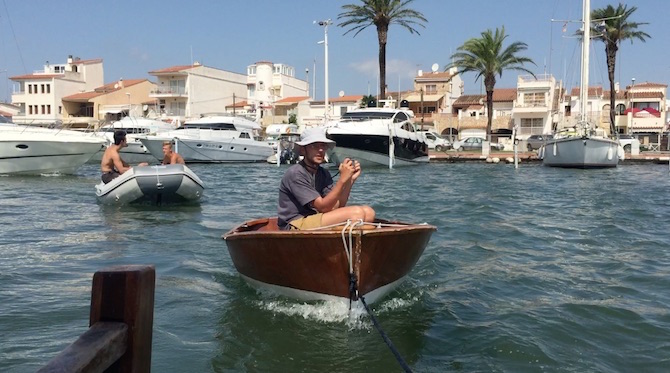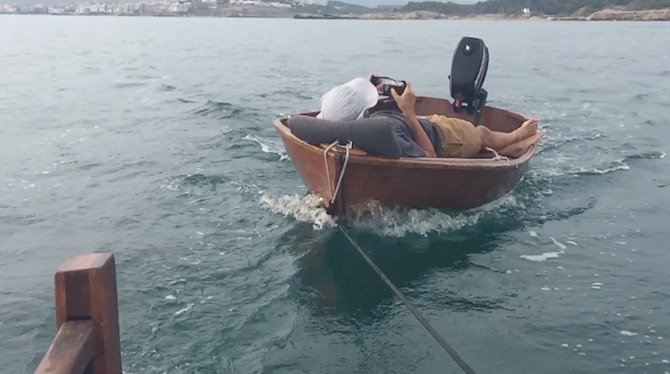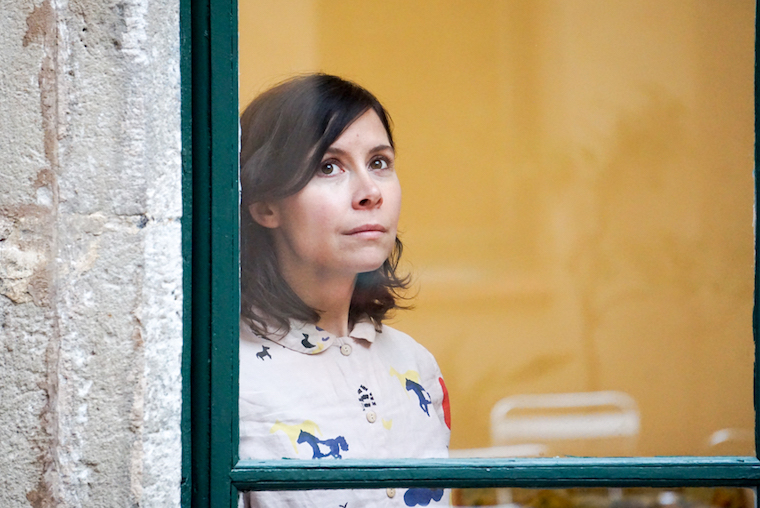Search
To search for an exact match, type the word or phrase you want in quotation marks.
A*DESK has been offering since 2002 contents about criticism and contemporary art. A*DESK has become consolidated thanks to all those who have believed in the project, all those who have followed us, debating, participating and collaborating. Many people have collaborated with A*DESK, and continue to do so. Their efforts, knowledge and belief in the project are what make it grow internationally. At A*DESK we have also generated work for over one hundred professionals in culture, from small collaborations with reviews and classes, to more prolonged and intense collaborations.
At A*DESK we believe in the need for free and universal access to culture and knowledge. We want to carry on being independent, remaining open to more ideas and opinions. If you believe in A*DESK, we need your backing to be able to continue. You can now participate in the project by supporting it. You can choose how much you want to contribute to the project.
You can decide how much you want to bring to the project.

“ – You, Hermós, always want to go in the cart of someone or another…You have the temperament of a maid…”. A Frustrated Journey, Josep Pla
In A Frustrated Journey, Josep Pla tells the of the voyage he and his friend Sebastià Puig i Barceló – better known as Hermos – supposedly made in a small boat in 1918, following the Costa Brava coastline round from Calella up to France. The idea of the trip was to visit some of Hermós’s family in Roussillon, but the mission was aborted when they reached French waters and spotted, in the distance, what looked like a warship. Hermós was petrified that they would demand a sailing licence, which he didn’t have, so they turned tail and set off back home.
Last summer, the artist Enric Farrés Duran, a native of Palafrugell and a descendent of Pla, wanted to relive Pla’s round the lands of the Empordà, but this time determined to reach the destination. To avoid a repetition of the failure of these two characters to reach Roussillon, Farrés Duran invested a navigation system that offered him more chance of success: his dinghy would be pulled at all times by a good boat with sails and a motor, captained by a well-known collector. And that is how on 3 August, at the height of the tourist season, Enric Farrés Duran and Josep Inglada (a well-known businessman, art collector and property owner, together with Roser Figueras of the Cal Cego collection) set off from Calella de Palafrugell for France; Farrés Duran in a small wooden rowing boat and Inglada en a large sailing boat with a motor, a replica of the famous craft owned by the poet and publisher Carlos Barral. One pulling the other.
In that art action, which was documented by the artist in small pieces of film taken with a mobile phone, the notion of failure appears in a unique and contradictory manner. On the one hand Farrés Duran plans his journey under conditions that would precisely completely reduce the risk of failing, as if the main motivation when it came to conceiving the project were to reverse the frustrated end of Pla and Hermós’s journey, or to update it within the parameters of efficiency and the achievement of results that are closer to our contemporary society, which is so full of praise for success and triumph. But on the other hand, his plan meant an honest recognition of the incapacity of the artist to be a productive and emancipated agent, the impossibility of responding efficiently to the demands of a culture oriented towards achieving tangible results: if the aim is to arrive at the destination, it is better to give the responsibility for the operation to a successful businessman and leave the creator in the submissive role of cargo. For all that it was a good gesture, Farrés Duran allowed himself to be carried, pulled along in both a literal sense (behind the other vehicle) and a metaphorical one (placing himself at the mercy of the other and having minimum involvement in the decisions).

The image of the large boat at full, splendid sail juxtaposed with the rowing boat that had to be pulled along invites a reading not just of the concepts success and failure and their translation on a socioeconomic level but also the relation of the dynamics of power, dependence and precariousness in the world of art, as well as the relationship of the poor perception that creation and its tangible value have in a neoliberal economic framework. The utilitarian attitude with which Farrés Duran conceived his journey also puts an end to the possibility of a heroic gesture and speaks of another failure: the failure of the tradition of the romantic artist who takes on nature alone in search of the sublime. That idealist creator, in an ironic reverse of roles, is substituted by a pragmatic artist who takes refuge in the infrastructure and resources of a third party and seems to prefer the result over the experience.
The plan of Farrés Duran would be the opposite of those other artistic endeavours that have as their central element the boat and/or the act of the voyage, imbued with a sense of the epic. Perhaps the most famous is In Search of the Miraculous, by Bas Jan Ader, an artistic action that saw the Dutch creator try to make a solo crossing of the Atlantic in a tiny boat and ended with his disappearance (whether intentional or not is unknown) in the middle of the ocean. More recently the project Watching the River Flow: What an artist and a gallery can do together for tomorrow, takes Japanese artists Shimbaku on a long canoe trip on the Sumida river together with his gallery owner, to personally collect the crates of beer that they would serve at the opening of his exhibition. On the return journey they were surprised by a big storm which, although it didn’t ruin their plan, reinforced the heroic and romantic component of the gesture. Closer to home, in Fitzcarraldo Martí Anson spent almost two months building a boat in the hall of the old Santa Monica which, as a result of its size, could never leave the building with breaking. Unlike that of Farrés Duran, his project emphasised the value of the process rather than the result and offered an absurd resistance to the doctrine of the efficiency and economy of goods.
However, the apparent ease with which Farrés Duran’s project fits in with the overriding logic of success and proclaims the failure of the artist generates in the viewer a growing distrust that makes other less obvious interpretations tempting. Is his role in being pulled along really so acritical? If the main idea for the journey, which to reach Roussillon, was fulfilled successfully, why does Farrés Duran call the project The Frustrated journey? Where does the frustration come in? In fact, that title seems inadequate even in the case of Pla. Talking of the voyage of Hermós in terms of frustration seems almost ironic since, although they failed to reach their destination it is also true that during the journey they had memorable moments, eating heartily in taverns and fishermen’s houses, and sharing stories and songs with friends and acquaintances. Also, the reason for turning about and not completing the route seems ridiculous and unjustified and makes you wonder whether visiting Hermós’s family was the real reason or just an excuse to go and then tell the tale. You could even say that Hermós purposely abandoned the idea of getting to Roussillon as if the fact of reaching his destination took away from what he actually had, which was the experience, the process, the journey in itself.
If we understand that his failure was desired, that the frustration was willingly claimed, the frustrated journey of Farrés Duran could be read, despite appearances, as a criticism of the culture of success and efficiency, a rejection of the dominant models of productivity and the search for results. In that sense the futility of the artist which Farrés Duran seems to be announcing and his supposedly relaxed passivity and proclaimed failure would be closer to inaction and the sense of the absurd of the characters of Beckett and Ionesco, and even to the pacific refusal of the famous Bartleby, They would acquire the value of disruption and resistance to artistic practices like that of John Baldessari or Jan Ader, which purposely sought to fail. From an existentialist way of thinking it is in failure and not success that there is the possibility of critically recognising one’s own existence and the futility of human endeavour. If we accept, then, the absence of any transcendent end, to plan a teleologically-spirited action and then take part in it from a position of inactivity (like Farrés Duran) could be a forceful way of denouncing the absurdity of that ideology of action and result.
At the beginning of the story, Pla talks of the “dream of a free life”, “without clocks or timetables or bells or conventions or clichés or factory sirens, or any of those sad obligations”. A life that has little to do with that of the successful businessman but which could also the life of some writers, artists and other creators who, in the paradigm of tangible returns, fail happily. d


Alexandra Laudo is an independent curator. In her projects she has explored, among others, issues related to narrative, text and the spaces of insertion between the visual arts and literature; the cultural history of the gaze; practices of resistance to the image in response to hypervisuality and oculocentrism developed from the visual arts and curatorship; and the 24/7 paradigm in relation to sleep, new technologies and the consumption of esimulants. Laudo has explored the possibility of introducing orality, peformativity and narration in the curatorial practice itself, through hybrid curatorial projects, such as performative lectures or curatorial proposals located between literary essay, criticism and curatorship.
Photo: Foto: © Ernest Gual
"A desk is a dangerous place from which to watch the world" (John Le Carré)